10 Things We Learned From WWE SummerSlam 2003
Vince McMahon was 58 years old, DAMMIT!

Aug 5, 2018
Seemed appropriate that a rather lukewarm, underwhelming SummerSlam would be soundtracked by the title song from one of the most maligned Metallica album in their catalogue (St. Anger, not Lulu). St. Anger was an album that saw James Hetfield and the gang trying to figure out what was what, and who was who, and that kinda sums up SummerSlam - a road into uncertainty, and product that paled to the predecessors from the same artists.
The year 2003 was not a stellar one for WWE. Aside from an excellent WrestleMania and a criminally-underappreciated Vengeance, their pay-per-view output was as lacklustre as Raw was generally abhorrent. SummerSlam may not have been as hideous as Judgment Day, Unforgiven, or Armageddon (choosing the worst out of those three is like picking which tornado-ravaged town is the least inhabitable), but it was still pretty bad. Next to 1996, 2007, and 2010, 2003 completes the unholy Mount Rushmore of worst SummerSlams ever (in this scribe's opinion, anyway).
Sure, it had its moments: a pretty good Kurt Angle/Brock Lesnar match for the WWE Championship, a fun four-way match for the US title, and a brief glimpse of Goldberg as an ass-kicking machine. Those moments aside, SummerSlam simply did not deliver on the event's legacy.

Phoenix, Arizona is the 11th biggest media market in the United States, and as of 2017, is the fifth-most-populous city in the United States, boasting 1.6 million residents. WWE, as well as WCW, had held events in the area for a number of years, primarily at the 18,000 seat America West Arena (which has since been charmingly renamed Talking Stick Resort Arena, as of 2014).
Yet incredibly, it took almost 140 pay-per-views for WWE to finally hold a pay-per-view in the Valley of the Sun, as SummerSlam 2003 was the first WWE PPV to take place in Phoenix, as well as the state of Arizona in general. Since then, seven more shows have taken place in Arizona, including WrestleMania XXVI in 2010 (in the city of Glendale), as well as the 2013 Royal Rumble. The 2019 Rumble will also take place in Phoenix, at the near-50,000 Chase Field, home of baseball's Arizona Diamondbacks.

SummerSlam 2003 was memorable for those who got to work on the main pay-per-view card, and who didn't. La Resistance, A-Train, Eric Bischoff, and Shane McMahon all took part in matches, while John Cena, Rey Mysterio, Matt Hardy, The World's Greatest Tag Team, and Christian were all left off the pay-per-view, as far as active wrestling goes. In Christian's case, it was a bit surprising, because he was the IC Champion at the time.
There's a logical explanation for that. Originally, Christian was supposed to challenge then-champion Booker T for the belt come SummerSlam, but Booker was hampered with a serious back injury, which had been made worse by recent international touring. Booker dropped the belt to Christian on a Sunday house show two weeks before the pay-per-view, and then took several months off after the fact in order to heal up. As such, Christian was a healthy scratch, due to having no ready opponent.
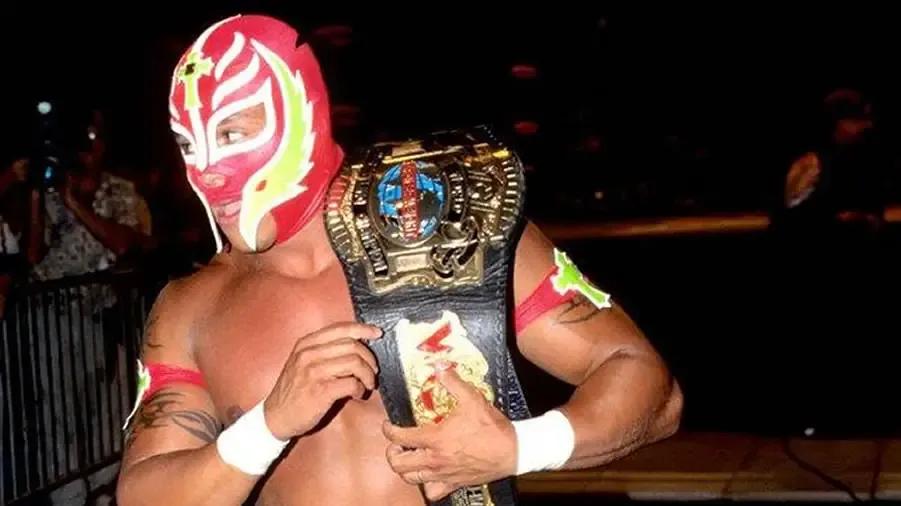
Mysterio reigned as WWE Cruiserweight Champion at the time of the show, and actually made a successful defence of the gold over Mattitude lickspittle Shannon Moore in the dark match. If original plans had gone through, Mysterio would've had an intriguing pay-per-view match with a man he'd once crossed swords with in WCW about seven years earlier.
According to Bryan Alvarez of Figure 4 Weekly, there were plans to pit Mysterio against Ultimo Dragon, the legendary masked marvel who had just recently popped up on SmackDown. WWE officials were apparently hoping that Dragon would hit the ground running as a certifiable crowd pleaser just as Mysterio had one year earlier, but it sadly was not the case. The brass would cool on Dragon, whose momentum was halted before summer was even over, and would be out of the company by the spring of 2004.
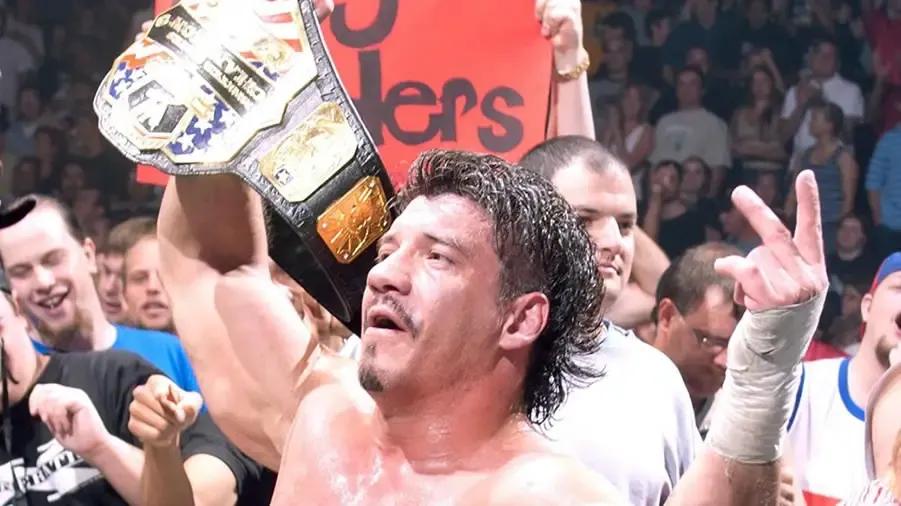
That first match of the 2003 SummerSlam that most would consider good was the four-way match for the United States title, in which Eddie Guererro thwarted Chris Benoit, Rhyno, and Tajiri with his usual cunning and villainous guile. Despite being one of the match's two heels, Guerrero was earning the strongest babyface reactions (due to his cleverness and subtle acting mannerisms), and it was something that WWE would soon have to address.
Guerrero's mid-spring heel turn on Tajiri did not take whatsoever, and if anything, fans were loving his charming underhandedness - an Artful Dodger with one sweet mullet. Guerrero knew the shift was happening at Vengeance the previous month, but he and WWE pressed on with the heel shtick, and Guerrero truly wanted to be a heel. Talk about timing: two nights after SummerSlam, SmackDown taped in Guerrero's native El Paso, TX, where he was treated as a conquering hero by the adoring crowd. The babyface turn wrote itself.

And I mean that in the nicest way. Kurt Angle would give the T-1000 a run for its money in terms of brushing off physical trauma that would leave most of us writhing in our own piss and blood. SummerSlam 2003 was just one of those occasions in which Angle performed with a serious injury, and had a rather interesting way of working around it.
According to Angle, he had torn one of his primary hamstring muscles on a tour of Japan the previous month. For most people, this would make taking time off in order to properly rehabilitate, but not our Olympic Hero, oh no. Instead of letting the torn muscle get itself right, he simply rehabbed the two other primary muscles to increase their strength, so that they could compensate for the torn one. Remember this the next time your eyes start watering when you get a splinter in your finger.
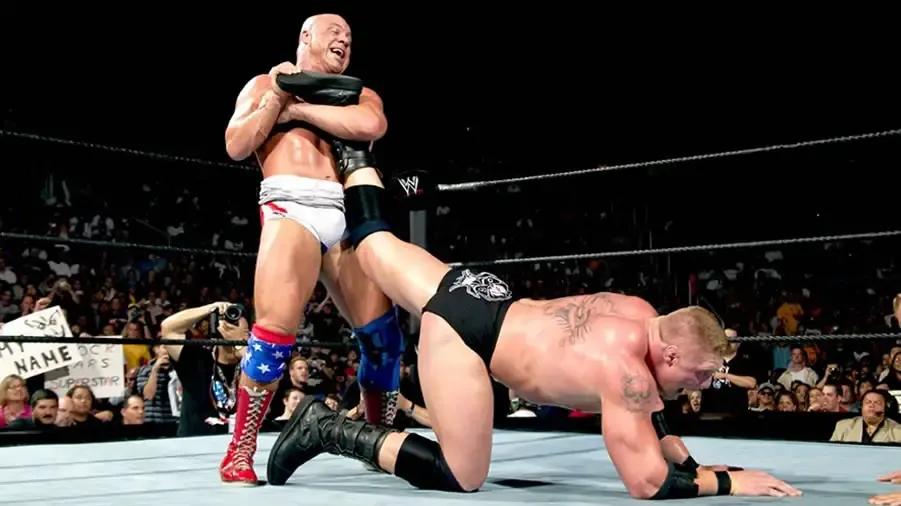
While not on the level of their WrestleMania XIX main event nor their 60-minute Iron Man Match on SmackDown, Kurt Angle and Brock Lesnar's battle at SummerSlam 2003 was still really, really good. It also alarmed viewers when indestructible killing machine Lesnar tapped out to Angle's Ankle Lock, which he allegedly (according to Angle) wanted to do as a means of giving his heel persona a vulnerable point.
As a result of the match, Lesnar became the first, and so far only, individual to lose a WWE Championship match at SummerSlam via submission. Throughout the event's history, aside from pinfalls, we've also seen SummerSlam WWE title bouts end in disqualifications, countouts, countouts where balloons fall anyway, and steel cage exits. The fact that Brock Lesnar is the only man to have submitted in a WWE title match at SummerSlam is actually quite surprising.
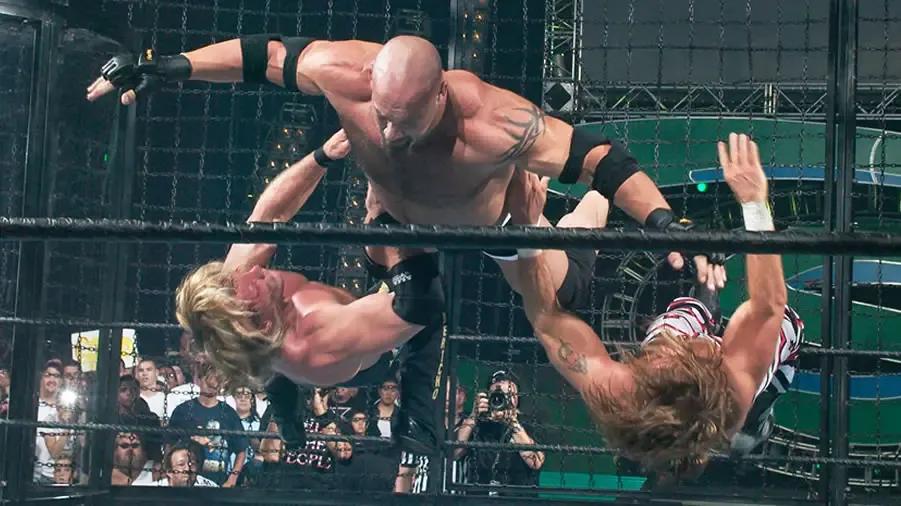
After signing but a one-year deal with WWE in the spring of 2003, Goldberg had roughly 366 days (leap year in 2004, lest you forget) to unleash all of the Goldberg mythos that could be merchandised by himself and his employer. A World Title run of some length was all but assured, and SummerSlam seemed to be the prime place to put the gold back in Goldberg.
Originally, Goldberg was set to wrestle Triple H for the World Heavyweight Title at the event, but plans changed into a six-man Elimination Chamber match that included Shawn Michaels, Chris Jericho, Kevin Nash, and Helmsley lackey Randy Orton. Goldberg looked suitably dominant in the rather-abbreviated Chamber match (only three minute intervals), only to be pinned by Triple H shortly after his maddened bull rush. Goldberg had to wait another month to defeat Helmsley for the belt, and there was a reason for that.
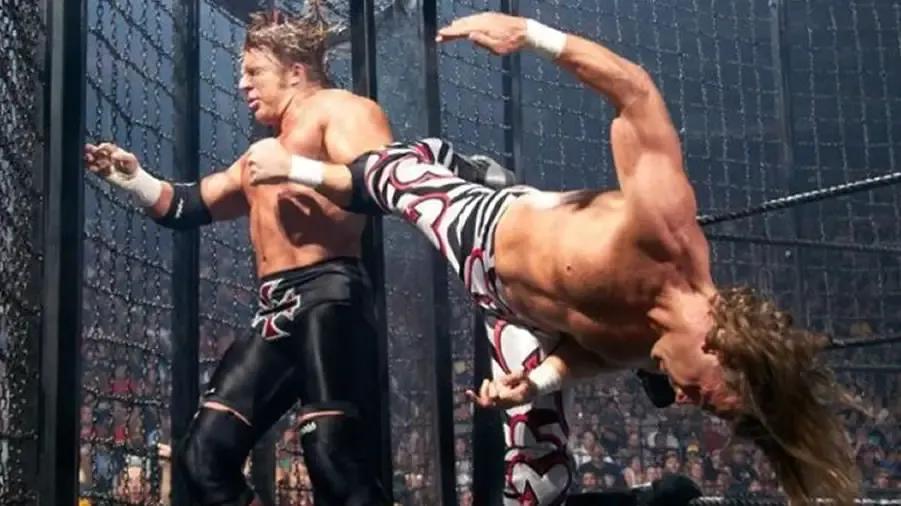
Kurt Angle wasn't the only defending champion at SummerSlam 2003 working through a hindering lower-body injury. Triple H had sustained a serious groin injury in mid-July 2003, and had been out of action for much of the run-up to SummerSlam. The injury necessitated the wearing of rather garish-looking bicycle shorts that apparently provided some additional protection for his ailing groin.
This is why Triple H didn't do much physically in the Elimination Chamber bout, limited to less than two minutes of actual activity prior to his braining of Goldberg with the trusty sledgehammer. The reason why Triple H won the match was because WWE wanted Goldberg's eventual win over him to actually mean something, and didn't want to have Goldberg score the victory while The Game was physically compromised. The title change was held off until Unforgiven four weeks later, by which time Triple H was presumably slightly healthier.
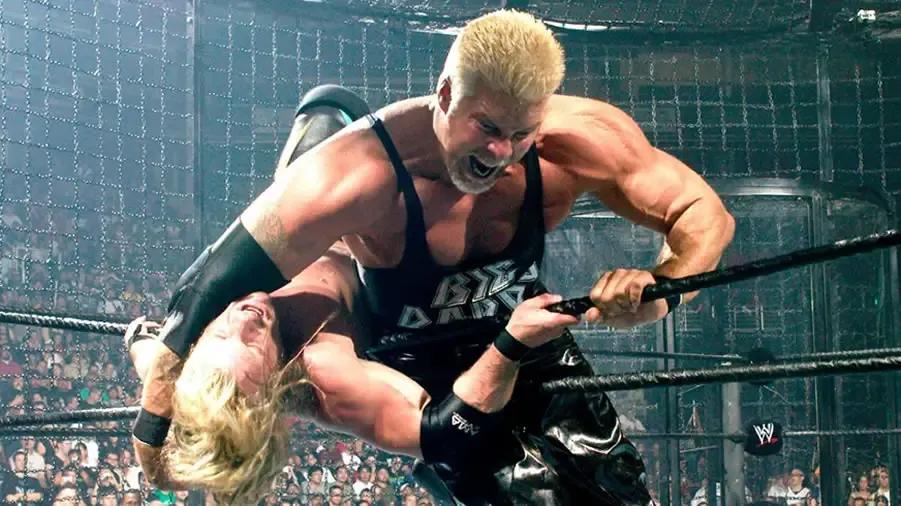
The last shred of the WWE-branded version of the New World Order went out to pasture after SummerSlam 2003... Kevin Nash was the sole survivor of the renegade trio after Scott Hall's firing in May 2002, and Hulk Hogan's exit in June 2003. Nash had signed a two-year deal in January 2002 to return to the promotion, but would disappear a few months before that written-in date.
Nash's last appearance in a WWE ring, prior to his return at the 2011 Royal Rumble, was in SummerSlam 2003's main event, getting pinned by Chris Jericho after two minutes in the Chamber. Nash's penultimate appearance for the company at the time came on the previous episode of Raw, when he lost a hair vs. hair match to Chris Jericho, giving Nash the shorter, neater look that he has mostly worn since then.

The 16th annual SummerSlam would take place on the date August 24 for the only time ever, which just so happens to be the birthday of one Vincent Kennedy McMahon. After the show went off the air, Stone Cold Steve Austin hit the ring for a special segment (that would be seen on his Stone Cold Truth DVD) in which he called out Vince McMahon, as well as the entire roster, for a little birthday celebration.
Highlights of the segment included Big Show rolling out of the ring to prevent a weight-related collapse, Austin and Undertaker coercing a hesitant Vince into admitting his real age ("I'M 58 YEARS OLD!!" he would bark), and Vince vowing to outlive everybody present (which is probably a safe bet). It was a charming little piece of business unto itself, and almost makes up for the sour taste the pay-per-view left. Almost.